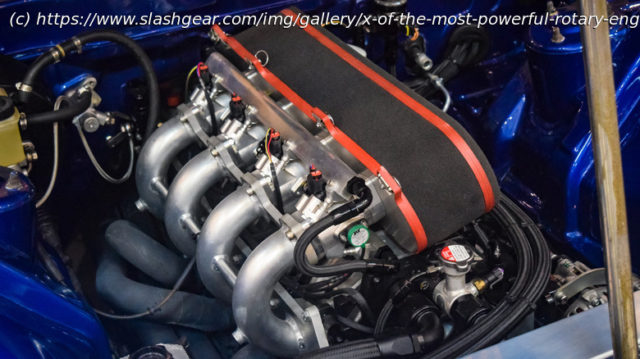Rotary engines have plenty of quirks, but they can still put up some impressive power figures. Here are some of the most powerful rotary engines ever.
The traditional piston engine has garnered the vast majority of attention and application in the internal combustion age, but there was another: the Wankel rotary engine. German engineer Felix Wankel designed the rotary engine in 1954. Employing a rounded triangular rotor spinning concentrically around a central shaft, Wankel rotary engines deliver glassy, smooth power and can produce impressive power ratings.
The rotary engine isn’t perfect. Gas mileage isn’t so great, finding someone willing to work on it can be a challenge, and they tend to burn oil and flood during cold starts. Still, their distinctive sound and quirky construction earned them fans and enthusiasts worldwide — and no, we’re not just talking about Mazda.
Since the rotary engine’s arrival, enthusiasts, tinkerers, and engineers have experimented to see how much power the unusual configuration can make, flaws or not. The results have been mixed. The rotary engine has graced engine compartments in everything from LeMans-winning race cars to build-it-yourself garage kits. Join us as we review seven of the most powerful rotary engines ever put in a car. R26B 4-Rotor 1986 Mazda 757 521 hp
While we will look at rotary engines from a variety of manufacturers, in honor of Mazda’s commitment to the rotary engine we kick off the list with one of the most powerful rotaries it ever produced. In the mid-1980s, Mazda was committed to achieving racing success with an all-Japanese-built rotary-engined car.
The 757 wasn’t Mazda’s first attempt at a rotary racer. Starting with the 717C in 1984, engineers employed a 1,300cc 13B rotary engine sourced from the RX-7. The modified 13B produced around 310 hp at 9,000 RPM and had underwhelming results on the track. In need of a fresh take, Mazda hired British designer Nigel Stroud. He developed an all-aluminum monocoque over a steel subframe with an upgraded Mazda 13G 1,962cc triple rotor Wankel engine nestled amidship. The resulting 1987 Mazda 757 made 444 horsepower, and the years of racing experience began to pay off.
As far from stock as a racer could get, the 1987 Mazda 757 participated in LeMans’s Group C non-homologation prototype class. Two hours after the race started, one of the two 757s suffered engine failure and had to withdraw from the race. However, the other one finished in the top ten — albeit after a series of crashes and failures amongst competitors — with a seventh-place finish.
[Featured image by Darren via Wikimedia Commons | Cropped and scaled | CC BY 2.0]XP-895 4-Rotor 1973 Chevrolet Aerovette 400 hp
When Mazda introduced the original rotary-powered production vehicle — the Cosmo Sport — in 1967, other producers got on the rotary bandwagon. General Motors (GM), Ford, Chrysler, Mercedes, and American Motors started up Wankel development teams. GM even paid a $50 million licensing fee for the rotary design. Corvette engineer Zora Arkus-Duntov was hot for a mid-engined ‘Vette, but he was given the green light with a caveat — GM president Ed Cole demanded it be rotary-powered. The result was a pair of intriguing mid-engine Corvette prototypes that arrived decades before the 2020 C8 did it for real.
Arkus-Duntov acquiesced, instructing his engine expert, Gib Hufstader, to get on it. Hufstader paired two separate dual-rotor engines around a central shaft. The XP-895 debuted at the Paris Auto Show in 1973 alongside a single-engined dual-rotor-midship Corvette called the XP-987GT. The cars made a slash among fans and the press, sparking speculation that GM was heading for a mid-engined, rotary phase. The new approach was controversial among purists. Ultimately, the XP-895 went home to be refitted with a 400ci V8 piston engine.
In the end, Chevrolet reverted to form. Both cars are gorgeous, even today. Sweeping and classic, they carry the traces of past and future Corvettes, reminding us of the time we were this close to a mid-engined ‘Vette in the 1970s.
[Featured image by Prayitno via Wikimedia Commons | Cropped and scaled | CC BY-SA 2.






